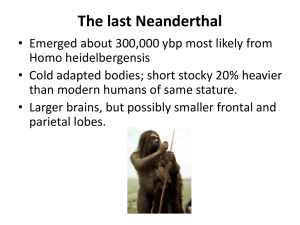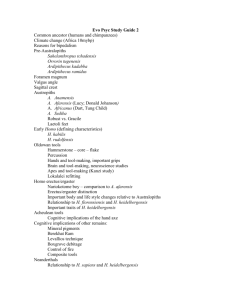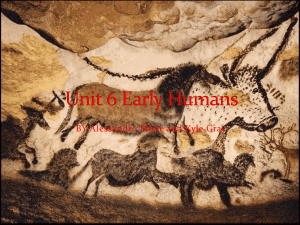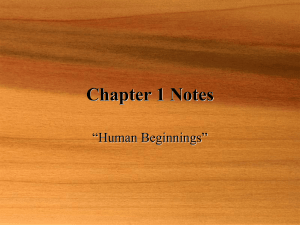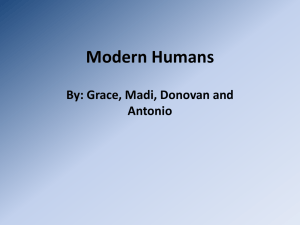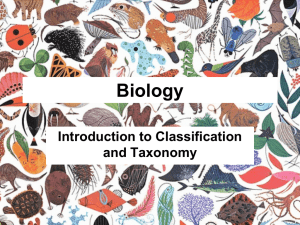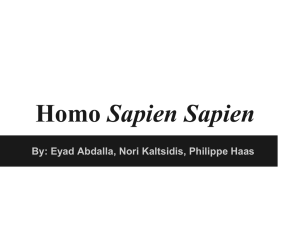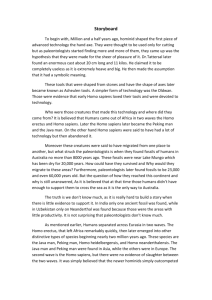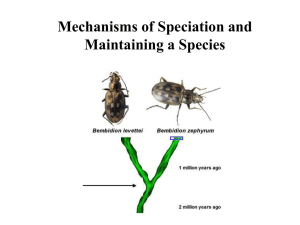Emergence of Homo sapiens
advertisement
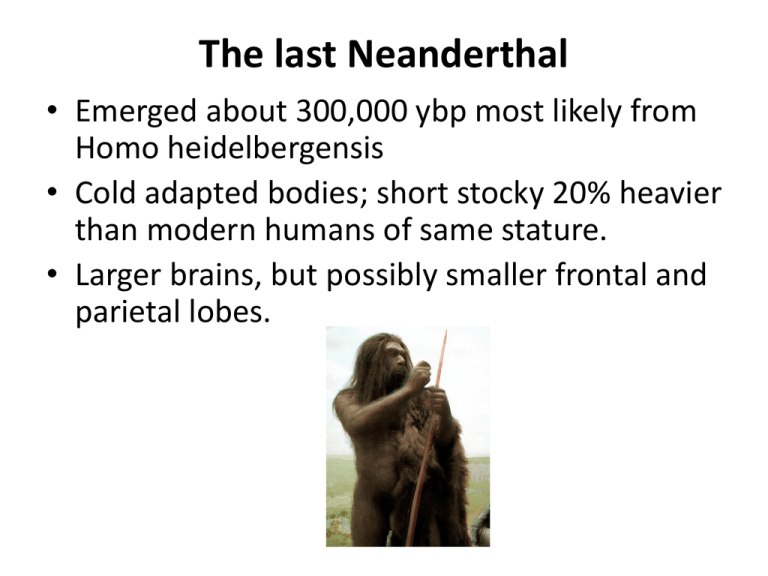
The last Neanderthal • Emerged about 300,000 ybp most likely from Homo heidelbergensis • Cold adapted bodies; short stocky 20% heavier than modern humans of same stature. • Larger brains, but possibly smaller frontal and parietal lobes. Hunting, Toolmaking • Close in kills, not projectiles • Injury patterns similar to rodeo riders • Smaller ranges, little evidence of raw material exchange • Levallois technique • Mousterian tools: hafting Social life • • • • • • Smaller, more local groups Less organized camps, more temporary Less organized hearths Abundance of ochre, other oxides Chatelperronian controversy No sexual division of labor? Emergence of Homo sapiens First anatomically modern humans (behaviorally?) Omo Kibish Ethiopia 190,000 Herto 160,000 ybp (defleshing) Homo sapiens more derived than Neanderthals. Human developmental pattern (necessary for cultural learning): altricial infants-early weaning age-extended juvenile period-adolescent growth spurt Two stages: Homo erectus (Turkana Boy 1.6 mybp) Transition to Homo sapiens (300200ybp) Middle Paleolithic or Middle Stone Age: 250,000 – 35,000 ybp • Emergence of two new species (possibly both descended from Homo heidelbergensis: Homo neanderthalensis (Neanderthals in Europe), and Homo sapiens sapiens (AMH in Africa). • Levant event: First (failed) excursion of AMH out of Africa Upper Paleolithic • Aurignacian tool kit • MCPH1: 37,000 ybp AMH: Expansion out of Africa (about 60,000 ybp) • Genetic evidence: • Interbreeding with Neanderthals 60,000ybp in Levant – on to Europe and Asia • About 50,000ybp same with Denisovians in East Asia -- on to Melanesia (Denis: pinky and one tooth!) Modern Cognition: Cave art, abstract artifacts, religious/symbolic imagery McBrearty & Brooks (2000) The revolution that wasn’t JHE, 39, 453–563 Effects of EMW • • • • Increased phonological storage capacity Recursion Cross-modal thinking Long range planning (subjunctive “what if” thinking) • Episodic buffer capacity (mental time travel) Archeological evidence for EWM • Alloying metals: 5,000 ybp • Traps and weirs: hard evidence: 9-12,000 ybp; implications 20,-25,000 ybp. • Harpoons: 17,000ybp • Managed foraging: burning, Niah Cave, Borneo 30,000ybp • Colonization: Australia 40,000? 30,000 New Guinea • Abstract artifacts: Hohlen-Stadel; Lartet Plaque; 30,000ybp Blombos beads • Why not evidence for EWM • Social categorization based on expanded parietal cortex, but not abstract, and not combination of categories (as is true with H-S figurine).
